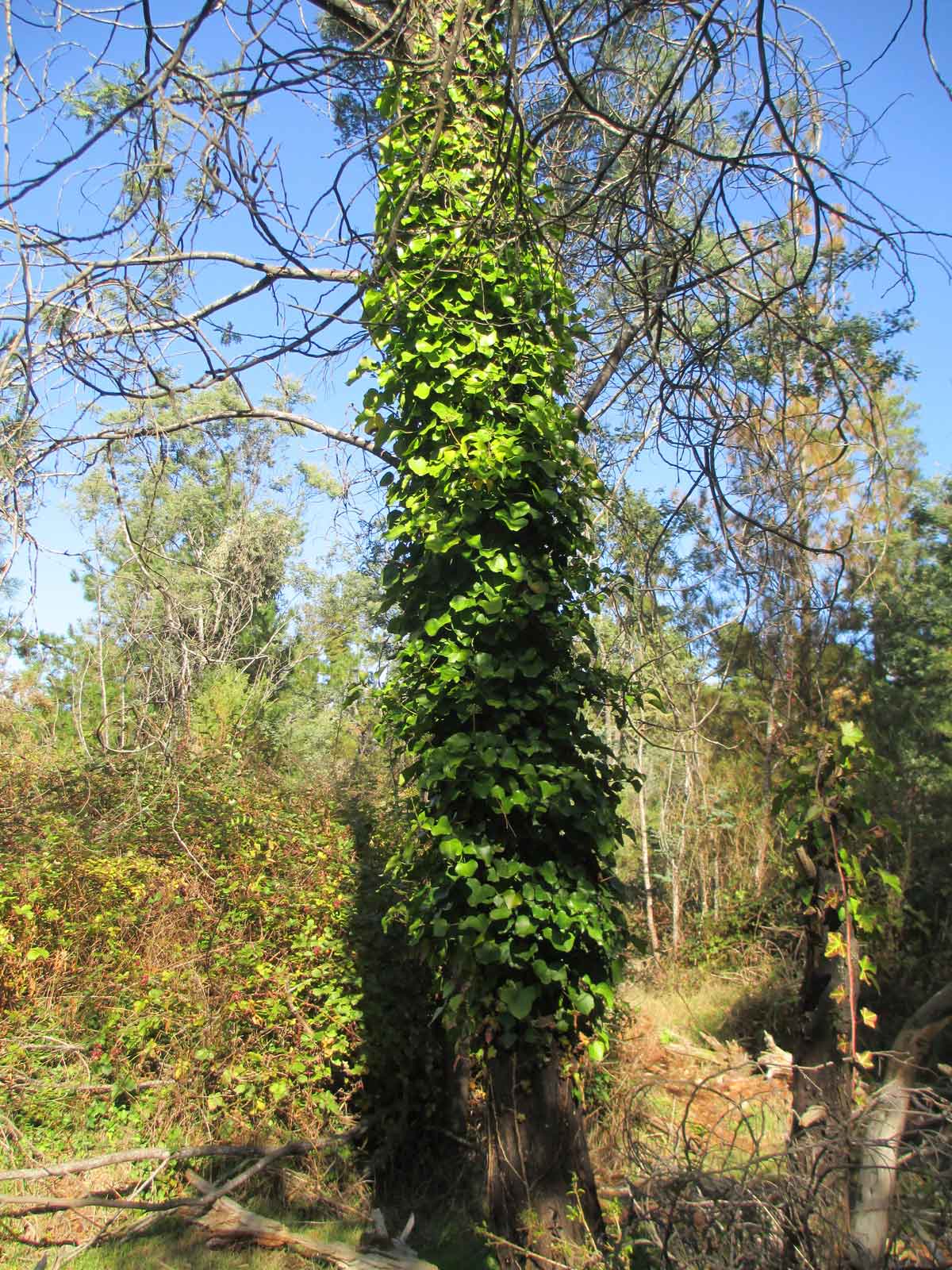By Joanne Millar, Kiewa Catchment Landcare Network
If you regularly walk through forest reserves around the Border region, you may notice familiar plants from house gardens. Over the years, these garden escapees have found their way into native forests and proliferated. How on earth did they get there you may well ask? Well, the most obvious is waste dumping. Years ago, it was deemed ok to just dump cuttings and unwanted plants on the edges of reserves or deeper in where people couldn’t see the offender! Although this practice has thankfully reduced, it does still occur and can lead to invasions that spread and endure for decades.
Plants like lilies with tubers or bulbs settle in and continue to expand in area. Those with seeds, runners and berries are spread by birds, animals, humans and wind. The most invasive garden species in our region are privet, English ivy, asparagus fern, topped lavender, daisies, Spanish heather, euphorbia, cotoneaster, periwinkle, tree of heaven, agapanthus, and sycamore trees. Once they get established in an area it can be very difficult to fully eradicate them.
There are several strategies to reduce garden escapees from getting away. The first is to not buy or plant these invasive species in your garden, even if they are available in nurseries. Secondly, when cleaning up your garden, make sure to put ALL garden waste in the green bin. Don’t leave piles lying around that could be taken by birds or picked up by the wind. Thirdly, before you go for a walk in forest areas, hose your shoes and boots underneath to remove any invasive seeds. Likewise when driving into the bush, hose down the car tyres before leaving and when you drive from spot to spot.
There are also things you can do when you walk in the bush. You can pull out seedlings when you see them, break off pine seedlings when they are small to stop them growing and report invasions to your local Landcare group. The Kiewa Catchment Landcare Network has local groups covering Baranduda, Tangambalanga, Kergunyah, Yackandandah, Gundowring, Running Creek and Mt Beauty. Volunteers work hard to reduce environmental weeds on public and private land. These groups have the skills and tools to tackle garden escapees so let them know what you find! For more information go to kclg.org.au and necma.vic.gov.au.


